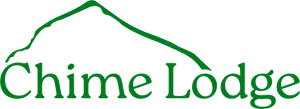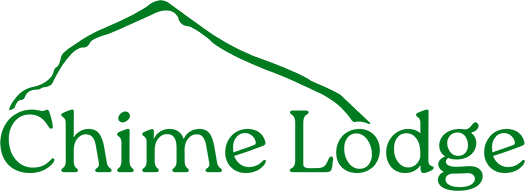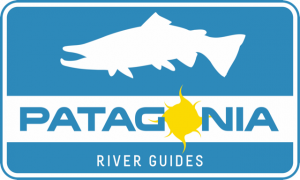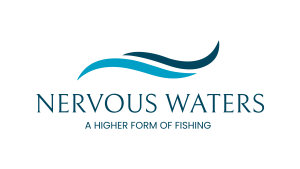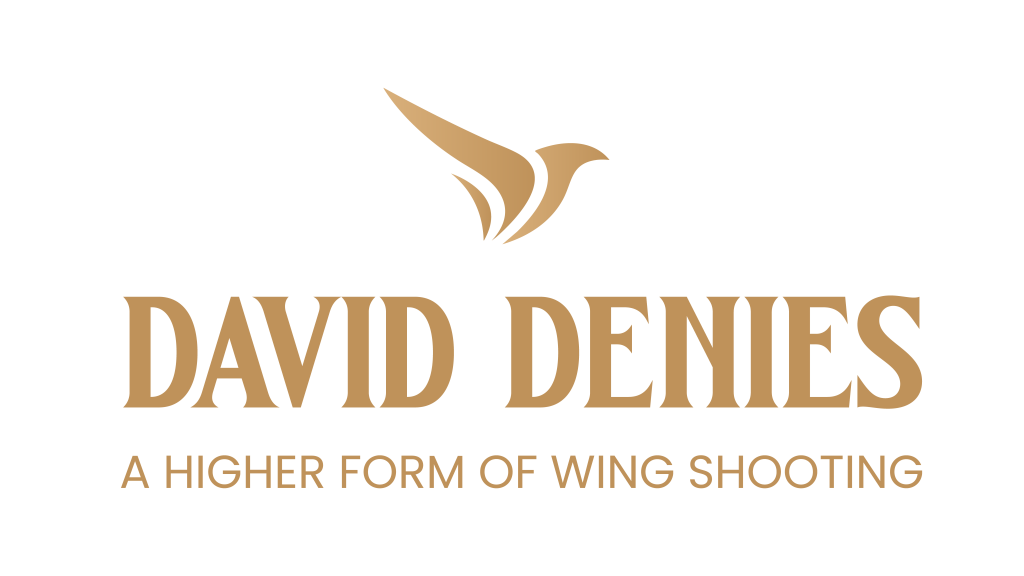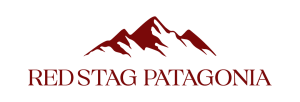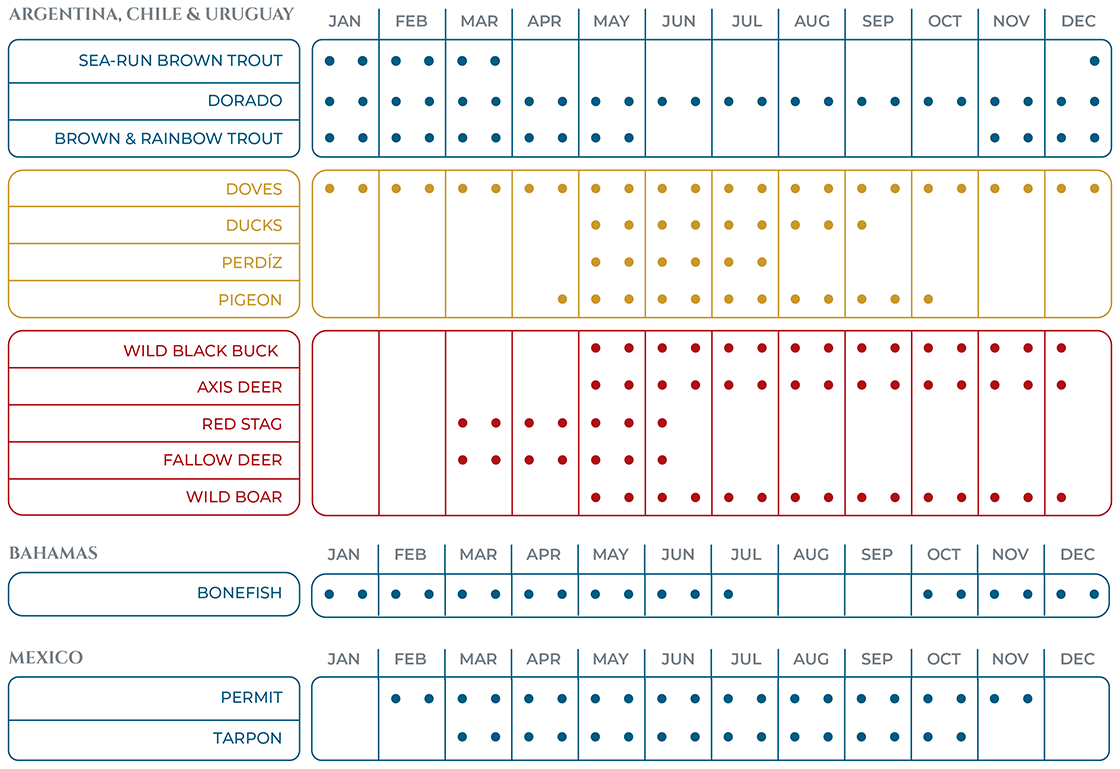Spring: December 1st to January 1st
The fishing season officially opens in Argentine Patagonia on November 1st; although, Chime Lodge normally don’t open their doors until the first of December. Spring is a special time to visit Patagonia as the Andes Mountains still hold a large amount of snow and valleys are covered with spring flowers. Precipitation decreases throughout the month of December and average temperatures rise along with the length of day until the summer solstice on December 21st.
Area fisheries are full of water but almost every stream is fishable after December 1st due to the many river-lake systems in our area. Since the water is higher this time of the year, the largest fish tend to be more aggressive and accessible. Fishing is generally spectacular but flexibility is a must as streamers, dry flies, and nymphs are all used depending on the river levels and daily weather conditions. Large flies normally concocted with rubber legs, long hackles, bunny fur, foam–you name it (chernoble’s, garbage, junk, bichos, mutant’s, big foam, etcetera.)—can be thrown and are very effective this time of the year due to the aggressive nature of the fish and the lack of pressure. You can leave your 5X at home but be sure to bring some 0X and even a sink tip to go down and dirty. Your guide will be as anxious as you are as they have been waiting for the season as long as you have.Normal tourism season begins after Christmas and the New Year so our area is much more relaxed and the fish are very willing.
Summer: January 1st to March 15th
Summer is the most popular month for fishing and tourism in Patagonia. The kids are on vacation and tourists abound. The weather is the best this time of the year with decreasing precipitation and the warmest temperatures. Some snow remains on the highest Andes peaks but almost all the spring flowers are already gone. The grass is getting long, and with warmer temperatures —you guessed it— hoppers and terrestrial insects are prolific and you will enjoy dry fly fishing almost exclusively. There are uncountable species of beetles, ants, hoppers, crickets, wasps, and other unidentified flying objects this time of the year and the trout are looking for them.
A South American phenomenon: the hottest, brightest, and clearest days are the best dry fly and fishing days! Yes, it’s true, a bluebird-fisherman’s dream! All the above being said about fish looking to slam dry flies is true, but the presentation is key on some streams as fish have seen a few gypsy kings, fat Alberts, Chernobyl ants, hoppers, etc…..and they are as suspicious as they are aggressive this time of the year. You might have to drop down to 3X, 4X, and occasionally even 5X and use a dropper to attract fish in the crystal clear water. You will have lots of sight fishing opportunities daily and wet wading is possible for the majority of the time.
Water levels continue to drop and water temperatures rise this time of the year. Every fishery is open and in perfect shape. This is Prime Time and getting a spot with Chime Lodge is not easy. Repeat customers reserve most spots year after year. If you can get a spot, you won’t be disappointed!
Fall: March 15th to May 1st
Fall is the favorite of many anglers, and it is a great time to visit Patagonia. Summer tourist traffic drops off completely and Chime Lodge once again has a vast wilderness to themselves. Temperature decreases and precipitation rises this time of the year, which normally brings on the fall feeding frenzy of area trout with cooling and rising rivers. Browns and brook trout are getting ready to spawn and many of those larger fish, which swam back into the lake during the middle of summer, are migrating back to the river to feed or spawn.
Fall colors in Patagonia are spectacular and if you are lucky enough to be able to come and enjoy the fall, you will probably become addicted to the beauty, the tranquility, and the fishing. Although the days are not as long as the spring and the summer, you still get plenty of time on the water, in fact, you might actually get more fishing as the guides are excited this time of the year.

